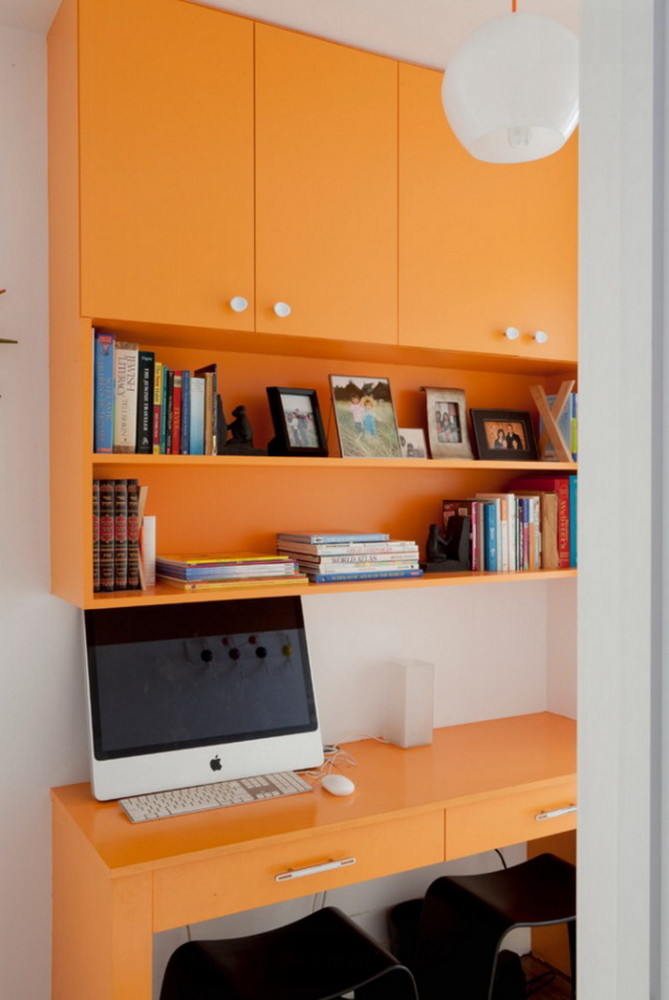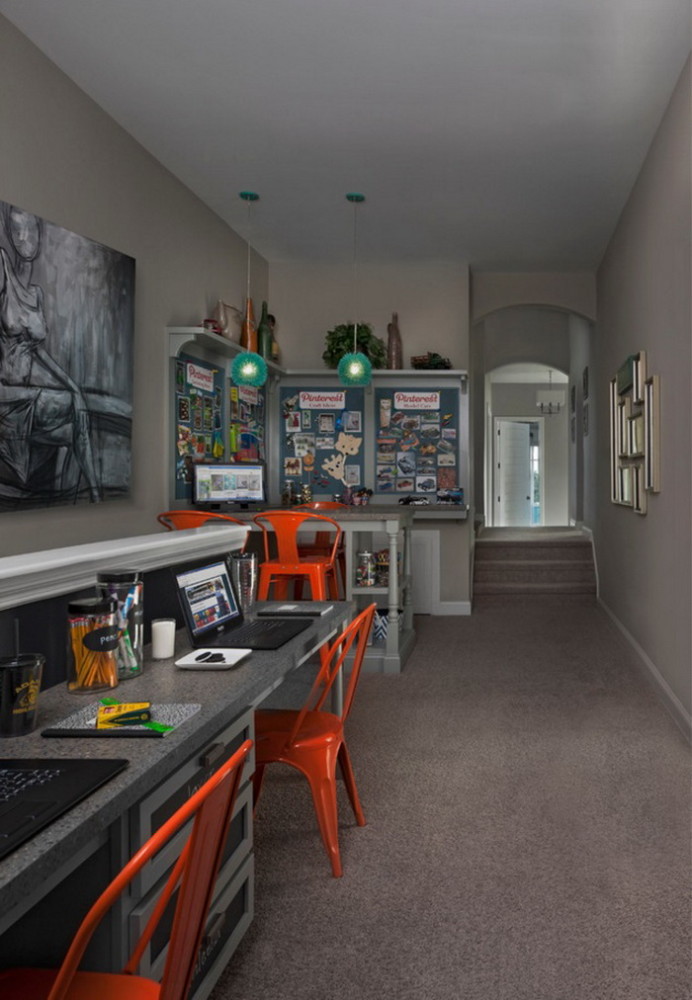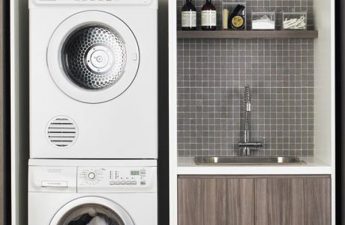Back to school soon - August is the perfect time to get busysetting up a workplace for your future excellent student. Whether he or she is going to class for the first time in his or her life or for the tenth time is not as important as how the chosen furniture, lighting and storage systems affect health and academic performance. Don't know what to do? We will tell you what to pay attention to The office environment affects the result of efforts and general well-being - any adult will confirm this, even if they have to work from home. Schoolchildren have their own tasks - to gain knowledge, and an organized workplace, of course, structures this process and makes progress stable. Do not think that a sofa and a laptop are enough to keep up with all subjects. Try to provide your son or daughter with the opportunity to study calmly, productively and without harm to health from the very first days.
Where to find a place
Ideally, the work area should be as small as possible.isolated. It is not a good idea to set it up in a walk-through room or in the kitchen, but if there are no other options, try to separate the area visually or with a mobile screen. It is very important that the student’s field of vision is not exposed to the image flickering on the TV screen while he or she is concentrating on his or her work.
How to choose a table
The parameters of the correct table are in directdepending on the size of the young growing organism. with a variable height - a solution that will help to adapt to the growing organism. It's simple - putting his elbows on the table, the child should easily reach his temples with his fingers. With a height of 120 centimeters, the height of the table will thus be about 52 centimeters, with a height of 160 - 67 centimeters. The width of the table depends on what is on it. Most likely, over time, a computer will appear here - doctors recommend placing it so that the screen is 60-70 centimeters. A pull-out shelf will help to find additional space for the keyboard. For first-graders who are just learning to read and write, it is important to ensure minimal strain on their vision and spine. This can be done if the tabletop is slightly tilted - so that the distance from the eyes to the book or notebook is about 30-35 centimeters. Authors - PlatFORM Design Studio Ouropinion: - The glossy surface of the table is harmful to vision - glare tires the eyes. And the black color contrasts too sharply with the whiteness of the paper. Choose light matte natural materials and avoid sharp corners.
Authors - PlatFORM Design Studio Ouropinion: - The glossy surface of the table is harmful to vision - glare tires the eyes. And the black color contrasts too sharply with the whiteness of the paper. Choose light matte natural materials and avoid sharp corners.
How to choose a chair
It is essential to select a table and chairat the same time, and your student should take the most active part in the choice. With the correct body position, the legs are bent at a right angle and stand on the floor or a stand, the lower back touches the back of the chair, reaching the edge of the shoulder blades. A height-adjustable seat and backrest with the ability to change the tilt are the best choice if you do not plan to change the furniture every year. A chair on wheels is easier to move, but make sure they are securely fastened. For younger students, experts still advise buying a simple chair without armrests - less temptation to spin, roll and be distracted from lessons. An uncomfortable position while working on homework is a guarantee of potential health problems, so be sure to make sure that the child is comfortable and monitor his posture. Our opinion:— Rounded seat corners and reliable support legs are the key to reducing the likelihood of minor household injuries. Choose materials containing natural fibers, and forget about leather for now — the seat should be pleasant to touch both in hot and cold weather.
Our opinion:— Rounded seat corners and reliable support legs are the key to reducing the likelihood of minor household injuries. Choose materials containing natural fibers, and forget about leather for now — the seat should be pleasant to touch both in hot and cold weather.
Subtleties of lighting
To make it convenient to do homework,You need both natural and artificial lighting. A universal rule: the light source should be on the left and in front of right-handed people and on the right for left-handed people, so that the shadow of the hand does not fall on the paper. Diffused light from the window is more pleasant - do not arrange your work area on the windowsill, step back 40-50 centimeters. At dusk, turn on overhead lighting and a table lamp. The recommended lamp power is 40-60 watts. Experts believe that warm white light is optimal for vision, does not distort colors and does not affect vision - choose a light lampshade and a traditional incandescent lamp. Our opinion: - The optimal angle of light incidence will change as your baby grows - buy a lamp with an adjustable bracket right away.
Our opinion: - The optimal angle of light incidence will change as your baby grows - buy a lamp with an adjustable bracket right away.
Storage and organization
The storage system can be anything - shelves,boxes, baskets. But if it is possible to allocate several places for different categories: notebooks, textbooks, writing instruments. Labels and inscriptions will help first-graders not to get confused and easily find what they need. Modules with transparent cells are a good option for elementary school. Keep in mind that everything put away in the far corner will simply disappear from the student's memory, what is in plain sight will be actively used. Walls should not be empty:Why not place a magnetic or cork board here? You can use it to store your schedule, notes reminding you of important things to do, or simply inspiring pictures and certificates of honor.
Walls should not be empty:Why not place a magnetic or cork board here? You can use it to store your schedule, notes reminding you of important things to do, or simply inspiring pictures and certificates of honor. Our opinion:— Psychologists believe that graphic representation of material plays a very important role in the process of memorization. Teach your child to use a magnetic or cork board for learning: here you can clearly demonstrate the connections between facts, draw diagrams and graphs, store cards with foreign words that need to be memorized.
Our opinion:— Psychologists believe that graphic representation of material plays a very important role in the process of memorization. Teach your child to use a magnetic or cork board for learning: here you can clearly demonstrate the connections between facts, draw diagrams and graphs, store cards with foreign words that need to be memorized.
The Importance of Color
Of course, the color of the work area should be pleasingyour schoolchild - there is nothing more pointless than trying to concentrate where something irritates. Universal advice: choose neutral tones, but perhaps the child's temperament should also be taken into account. Blue and green tones will calm the choleric, help concentration, yellow and orange shades will add energy to the phlegmatic. Dark and gray shades are very popular - this palette helps them feel their uniqueness.


 Our opinion:— Research by scientists demonstrates interesting facts about the relationship between the design of a room and the psychological state of students. Thus, cold tones promote concentration in general, while bright and warm tones improve the mood of children in elementary school. As they get older, schoolchildren prefer more muted and pastel shades. And in a room with walls of their favorite color, they make fewer mistakes in their work.
Our opinion:— Research by scientists demonstrates interesting facts about the relationship between the design of a room and the psychological state of students. Thus, cold tones promote concentration in general, while bright and warm tones improve the mood of children in elementary school. As they get older, schoolchildren prefer more muted and pastel shades. And in a room with walls of their favorite color, they make fewer mistakes in their work.


